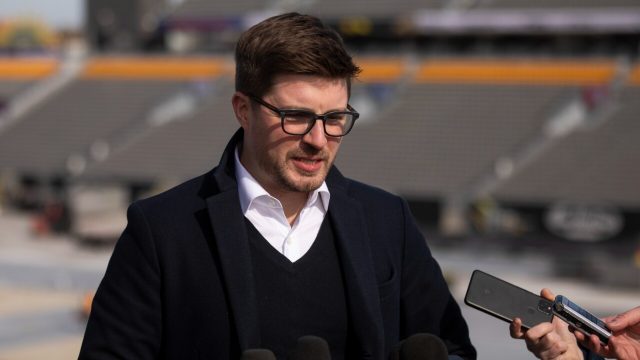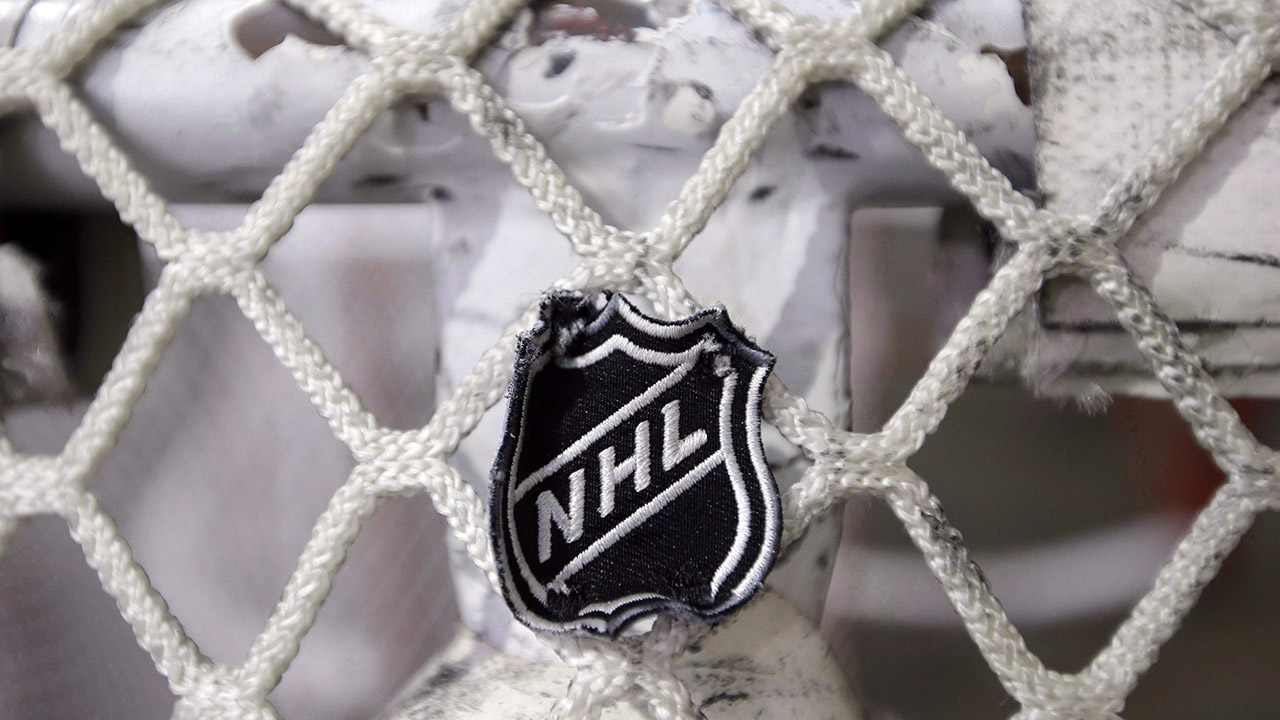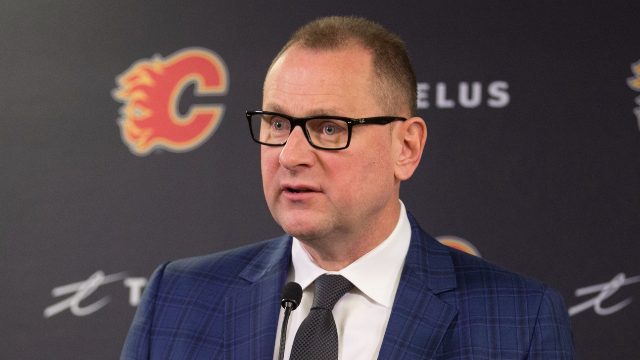At the NHL trade deadline, sometimes it's better to stand pat, or work on the edges of your roster.
The most commonly moved piece this time of year are depth defencemen because it's not often you get through a playoff run unscathed and if you have to run out an inexperienced blueliner or two, your team can be exposed at a critical moment. So, if you can try to prepare for that by acquiring a more capable player with some level of experience (in case of emergency), it's going to be worth the low cost of a middle-to-late-round pick. Jason Bukala outlined some of those types of defencemen here.
Likewise, since the playoff season is known for its "tougher" style of hockey, where open ice and space to work with is much harder to come by and every inch is a battle, depth line grinders are another attractive piece.
These may not be the most exciting moves, and far from the blockbusters we all hope for, but sometimes they are the right ones to make. The true top teams in the league have mostly been built through years of planning or in off-season changes. If you have a lot of things to address in-season at the deadline (ahem, Toronto Maple Leafs) you might not really be a contender at all.
That's not to say Stanley Cup-winning teams never make big and bold additions at the deadline, though.
The first, and maybe biggest, deadline day blockbuster was the NY Islanders acquiring Butch Goring from Los Angeles in 1980. Goring was productive for them right away for their first Cup win that spring, he won the Conn Smythe when they repeated in 1981, and the Islanders didn't lose another playoff series until the 1984 Stanley Cup Final.
More recently, in 2001 the Colorado Avalanche acquired Rob Blake who was added to a star-laden roster. In fact, at the 2000 deadline, Colorado picked up Ray Bourque to chase his Cup dreams, which finally came to fruition in this 2001 run.
So, if your favourite team makes a splash for, say, Claude Giroux or Tomas Hertl or Marc-Andre Fleury or Jakob Chychrun this season, it doesn't mean you won't be winning it all. It would, however, break from recent tradition.
Here is a look at how the past five Stanley Cup winning teams approached the trade deadline:

2017: Pittsburgh Penguins
In 2016-17 the Penguins won their second Stanley Cup in a row and were still benefitting from some of the trade work they got done the season prior.
In the summer of 2015, Pittsburgh acquired Phil Kessel for scoring and Nick Bonino for some of that valued depth grit and productive upside. In the middle of the year they acquired Trevor Daley for the blue line, and in January picked up Carl Hagelin. He, Bonino and Kessel came together to form the invaluable HBK line.
All of those players remained in place and most of then-GM Jim Rutherford's work that repositioned this team as a contender again was complete. So, the 2017 deadline was more about adding security, depth and putting the final touches in place for another run.
Days before the deadline Rutherford acquired rental Ron Hainsey for the blue line, who got into the first playoff games of his career at 36 years old. On deadline day itself, Rutherford picked up Mark Streit, who got into three post-season games.
Hainsey was the most consequential add and he averaged 18:47 of even strength ice time per game for the Penguins in the playoffs, the second-most among blueliners on the team. The Penguins did not have an injured Kris Letang at all for this run and had to depend on a blue line by committee that Hainsey played a key role in.
The Penguins sat third in the East on deadline day with a 38-15-8 record.
2018: Washington Capitals
After taking a stab at improving offence from their back end in 2017 by adding Kevin Shattenkirk at the deadline -- and then losing to the Penguins in the playoffs -- the Capitals maybe looked to their chief rivals for some inspiration at the 2018 deadline. Rather than making another big splash, the Caps were far more subtle, picking up little-known defenceman Michal Kempny from Chicago for a third-round pick.
Kempny wound up being a pretty effective addition, averaging 17:42 per game in the playoffs, almost entirely at even strength. The Capitals luckily only needed seven defencemen in their run (the seventh being Jakub Jerabek for two games, their other deadline pick up). Kempny turned out to be a stay-at-home complement to John Carlson on the top pair and earned a four-year contract extension after winning the Stanley Cup. That deal is set to expire after this season, though Kempny is far from as effective now as he was for the Caps in 2018.
Worth noting, too, that these Caps got out ahead of the deadline, with the Kempny deal being completed a week before and the Jerabek trade coming through five days before.
On deadline day itself, the Caps sat first in their division and fourth in the East.
2019: St. Louis Blues
The 2018-19 Blues were a fascinating Cup story. Seemingly dead and buried, sitting last in the Western Conference on Jan. 1, the Blues surged and found themselves fifth in the West by the time the Feb. 25 trade deadline rolled around. They could have been sellers at one point, but wound up a small buyer.
The only addition of note that GM Doug Armstrong made at the deadline was something we commonly see this time of year: he added a depth defenceman. Michael Del Zotto for a sixth-rounder was the only bit of business Armstrong conducted on deadline day and Del Zotto didn't suit up with them for a single playoff game.
Like the Penguins, the more important work that set St. Louis up to push for a Cup happened before the season. In the summer of 2018 Armstrong acquired Ryan O'Reilly from the Buffalo Sabres and signed free agents Tyler Bozak, Pat Maroon and David Perron. O'Reilly, Bozak and Perron were all within the top six Blues scorers for that playoff run.
Another key to their turnaround was the sudden rise of Jordan Binnington in net. With Ville Husso injured it was Binnington who was given an opportunity behind Jake Allen and he took over the starting job with it. Binnington's second half and playoff performance was integral to turning things around for the Blues -- far more so than any in-season trade did.
Promote internally and get a performance like Binnington offered up and who needs the trade market?
2020: Tampa Bay Lightning
Ah yes, it was a simpler time on deadline day in 2020. We were still a few weeks away from the pandemic fully crashing in North America and the shutting down of sports leagues and, really, life as we knew it in March. This trade deadline was like any other before it, except we didn't see how all the moves would pay off in the playoffs until August and September.
In 2020 the Lightning were still a team that hadn't scaled the mountain and were actually doubted by some -- after all, as a No. 1 seed in 2019 they had been swept by the heavy underdog Columbus Blue Jackets in the first round. They reached conference finals in 2016 and 2018, but whiffed entirely on the playoffs in 2017.
So, some work needed to be done at the 2020 deadline.
This was Julien BriseBois' second trade deadline as Lightning GM, and first without Steve Yzerman hanging around in an advisory role. The Lightning were second in the East and five points behind the proven Boston Bruins at the deadline and targeted a couple of forwards with the playoffs in mind -- and we can say this deadline had a definitively positive effect on both of Tampa Bay's Cup wins.
Eight days before the deadline, the Lightning acquired Blake Coleman from New Jersey for Nolan Foote and a first-round pick (Vancouver's via the J.T. Miller trade from the previous summer). Coleman was in the midst of a breakout season, following up a 22-goal year in 2018-19 with 21 goals through 57 games with the Devils. He didn't score another in the regular season with Tampa, though did get five goals and 13 points in their playoff run. What perhaps helped drive the price up on Coleman a little was the fact he had a contract with a $1.8 million AAV that also ran through the 2020-21 season, so Tampa was getting two cracks with him.
On the actual trade deadline day, BriseBois swung for another bottom-six contributor, acquiring Barclay Goodrow from San Jose for Tampa's first-round pick. Goodrow didn't have the same offensive upside as Coleman, but is tough-as-nails and added some missing snarl. Just like Coleman, though, Goodrow had a contract that ran through 2020-21 ($925,000 AAV) and so the Lightning got two runs out of him.
These two players together with Yanni Gourde made for a fearsome third line in Tampa Bay that was key to back-to-back Cup wins. All three were lost last summer -- Gourde to expansion, Coleman and Goodrow to free agency -- and Tampa Bay has had to reconstruct a third line from within.
But the 2020 deadline is a good reminder that sometimes you don't need to take cuts for big-name players to really address what your team needs to get over the hump. Tampa had its stars and its core in place, but BriseBois found value and a little bit of term in two important depth players. That he paid multiple first-rounders may have seemed a little expensive at the time, but in hindsight they were both clear wins for the Lightning.
2021: Tampa Bay Lightning
Last season was a weird one no doubt, as teams only played within their divisions and cross-border trades were complicated given mandatory quarantine rules in various places. Since the season started in mid-January and was 56 games in length, the deadline was pushed all the way to April 12.
The Lightning had, let's say, a little help in getting their deadline work done this season. With everyone healthy the team should have been over the cap, and so pre-season questions were all about who BriseBois would have to sell off to be compliant. Would it be Gourde and his $5.166 million AAV? Maybe Tyler Johnson and his $5 million cap hit?
How about no one?
Nikita Kucherov's season-long stay on LTIR meant the Lightning weren't in such a bad spot and could actually add again at the deadline. Rental defenceman David Savard was the best blueliner thought to be available and while his list of suitors was long, Tampa Bay were able to reel him in from Columbus for a couple of picks, including another first-rounder.
Now, he didn't end up being as great a fit with Tampa as 2020's pick ups, playing a bottom-pair role with almost no special teams exposure. And he was a straight rental who walked in free agency that summer. But, putting a shutdown defenceman capable of matching up against tough competition (with increased minutes in a pinch) on your bottom pair was well worth giving up a first-rounder for. And, heck, the Lightning won the Stanley Cup for a second time in a row, so who's to argue with their deadline approach?



